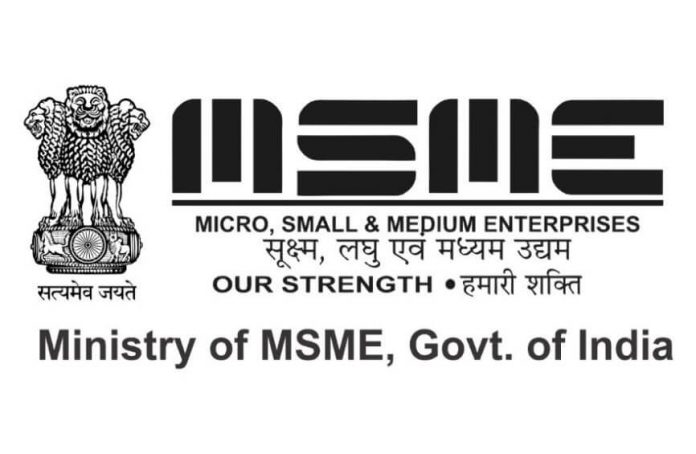This article is written by Aastha Verma, from Kalinga University, Raipur, Chhattisgarh. This article deeply analyses the Micro, Small and Medium Enterprises Development Act, 2006 and how Covid -19 has affected these enterprises.
Table of Contents
Introduction
The Micro, Small and Medium Enterprises Development Act, 2006 came into force on 16 June, 2006. It consists of six chapters which are further divided into 32 sections. This Act also provides for the formation of the National Board of Micro, Small and Medium Enterprises. The head office of the Board is in Delhi. Section 3 of the Act defines the members of the board. The Central Government, by notification, can constitute an advisory committee. Registration of micro, small and medium enterprises is replaced with the filling of the memorandum. To avail the benefit of the Act, it is always recommended to register the enterprises as a micro, small or medium enterprise. The concept is important for the promotion of industrial development in rural areas, use of traditional or inherited skills, use of local resources and mobilization of resources and exportability of products. It provides maximum opportunities for employment outside the agriculture sector as well.
Micro, Small and Medium Enterprises Development Act, 2006
Micro, Small and Medium Enterprises Development Act, 2006 provides the first-ever legal framework for recognition of the concept of enterprises. The Act provides a statutory consultative mechanism at the national level with the representation of stakeholders and a wide range of advisory functions. In accordance with the Section 7 of Micro, Small and Medium Enterprises Development (MSMED) Act, 2006, it is classified into two categories –
- Manufacturing Enterprises – They are defined in terms of investment in plants and machinery and engaged in the manufacture or the production of goods pertaining to any industry. In micro enterprises, the investment shall not exceed 25 lakhs rupees, in small enterprises it should be more than 25 lakhs and upto 5 crore rupees, in medium enterprises it should be more than 5 crore and upto 10 crore rupees.
- Service Enterprises – They are defined in terms of investments and engage in providing services. In micro enterprises, the investment shall not exceed 10 lakhs rupees, in small enterprises, it shall be more than 10 lakhs rupees and upto 2 crore rupees, in medium enterprises it should be more than 2 crore but upto the 5 crore rupees.
The government introduced the proposal in February 2018 for the classification of the enterprise according to the annual turnover which was more in line with the imposition of Goods and Services Tax (GST) but failed to implement it and now the MSMEs are classified according to the composite criteria of investment and annual turnover. As per Section 7, in micro enterprises the investment should be less than 1 crore and annual turnover should be less than should be less than 5 crore. In small enterprises the investment should be less than 10 crore and annual turnover should be less than 50 crore. In medium enterprises the investment should be less than 20 crore and annual turnover should be less than 100 crore.
Previous MSMEs Classification
| Classification | Micro | Small | Medium |
| Manufacturing enterprises | Investment < Rs. 25 lakhs | Investment < Rs. 5 Crore | Investment < Rs. 10 Crore |
| Service Enterprises | Investment < Rs. 10 lakhs | Investment < Rs. 2 Crore | Investment < Rs. 5 Crore |
Revised MSMEs Classification
| Classification | Micro | Small | Medium |
| Manufacturing and services | Investment < Rs. 1 Crore &Turnover < Rs. 5 Crore | Investment < Rs. 10 Crore & Turnover < Rs. 50 Crore | Investment < Rs. 20 Crore &Turnover < Rs. 100 Crore |
Objectives
Because of limited awareness and resources, a complete act for the formulation of rules and regulations for small businesses is in high demand in order to free it from other laws and regulations. The natural mobility of small enterprises to medium, has to be facilitated through various policy and legal frameworks.
- The main objective is to facilitate the promotion and enhance the development of micro, small and medium enterprises and for the matters connected with them.
- It seeks to provide for the establishment of a National Micro, Small, Medium Enterprises Board, a high level forum consisting of stakeholders for participative review for proposal and recommendation on the policies.
- Examine the factors which are affecting the promotion and development of various enterprises and take initiatives to review the policies of the Central Government and enhance the competitiveness of each such enterprise.
- Make the recommendation based on reviewing and advising the Central Government on the use of the funds.
- To promote e-governance for empowering citizens, promoting sustainable growth and enhancing efficiency through digital services for more inclusive growth.
- Establishment of specific funds for the promotion, development and enhancing the competitiveness of these enterprises and notification of scheme programs for the purpose.
Steps taken by the government
- National Manufacturing Competitiveness Programme (NMCP) (2007-2008) – This programme was started with the aims of enhancing the competitiveness of the Indian manufacturing sector by reducing their manufacturing cost through better space utilization, scientific inventory management and reduced engineering time.
- Public Procurement Policy 2012 in which each minister shall set an annual goal and procure a minimum of 20% of MSME within three years.
- Credit Guarantee Scheme, 2000 which provides a guarantee to member lending institutions of loans sanctioned without collateral.
- MSE cluster development program which includes infrastructure development, common facility centers etc.
Advantages of implementation
The Government of India wants entrepreneurs to normally register themselves to avail the benefits that are introduced by either the Central or the State Government under the Micro, Small, Medium Enterprises Development (MSMED) Act, 2006. It is a very powerful medium to enjoy the incentives offered by the Central Government. Some of the benefits are:
- Under Section 15 and Section 16 of the Act, it is mentioned if the buyer fails to make payment of the amount to the MSME supplier within 45 days, then he shall be liable to pay compound interest with monthly rate of that amount which is three times of the bank rate notified by Reserve Bank of India.
- Various tax rebates are offered to MSMEs.
- The major advantage is that the labour intensity of MSMEs is much higher than that of large enterprises. It generates large employment at a low capital cost.
- Registration with National Small Industries Corporation (NSIC), subsidy on NSIC performance and credit ranking, and financial assistance for setting up testing facilities.
- Easy finance availability from banks without any collateral requirement (any property given as a security against a loan).
- In the absence of collateral security, many business owners find it difficult to start their industry; however, if one is registered under MSMED Act, 2006 then it is specifically instructed to the bank to provide loans at lower interest rates than usual. Also, one can avail benefits from several banking institutions for their financial needs.
- Reservation policies to manufacturing or production sector enterprises. They can also register for purchase by the government.
- Higher preferences are given to the MSMEs for government license and certification.
Highlighting the loopholes
The MSMED Act, 2006 lays down various legal provisions for the welfare and the protection of the industries. There are a lot of good schemes which provide support in the competitive world. However, there are certain problems faced by MSMEs which are as follows –
- Absence of adequate and timely banking finance.
- Lack of market knowledge.
- Non-availability of suitable technology and low production capacity.
- Inefficient market strategy as no one is there to guide them
- Non-availability of skilled labour at an affordable cost.
The provisions mentioned in the Act are perfect but the state governments delay in implementing certain provisions of the Act. Enterprises are engaged in providing services, whose equipment is not directly related to the service provided or as notified in MSMED Act, 2006. Even after the provision related to payment is mentioned in the Act, the MSME industry is facing the problem of delayed payment. To solve this problem, the Government of India has taken initiative to form the ‘facilitate council’. Section 18 of the Act lays down the setting up of the facilitation councils in cases when the dispute arises regarding the amount due for any goods supplied or services rendered. Also, suppliers come within the jurisdiction of the court and buyers can be from anywhere from India. The main aim of the facilitation council is to solve the dispute by the method of alternative dispute resolution. The court is not allowed to take the cases of appeal from the facilitation council unless the appellant has paid 75% of the amount ordered by the council.
According to data provided by MSMEs, there are not even ten states where the facilitated council is functioning properly and also there are some states where there is no such council. The reason behind this is just to prevent the industries from going through lengthy court proceedings which require a considerable amount of money and usually these enterprises cannot bear it. Also, there are a number of cases pending before the courts because of improper functioning of the council. The Central Government should take time and coordinate with the state governments and monitor the cases pending in the council. Many states have not taken initiative to implement the MSMED Act, 2006 so the Central Government should take appropriate steps to make it applicable to all the states.
Impact of COVID-19 pandemic on MSMEs
During the Covid -19 pandemic, everybody has faced challenges. Also, MSMEs have the worst casualty of Covid-19 induced lockdown. In the time of crises, it constrains the government’s ability to help them as most of them are not registered anywhere. Even GST has its threshold and most micro enterprises do not qualify and also they do not maintain accounts, pay taxes or adhere to regulatory norms because of which their cost reduces. According to a 2018 report by the Indian Finance Corporation, the formal banking system supplies less than one-third of the credit to MSMEs than its potential needs because of a lack of finance. That is why the efforts of the Reserve Bank of India to push more liquidity towards MSMEs have limited impact. Also, banks dither from extending loans to MSMEs because of the high ratio of bad loans. Delay in payment to MSMEs from their buyers (includes government as well) or things like GST refunds.
Conclusion
Micro, Small, and Medium Enterprises have been accepted as an engine of economic growth and play an important role in the development of the country as it generates more employment at low capital cost. It employs nearly 11 crore people through the operation of five crore enterprises producing a heterogenous basket of about 7000 different products. The MSMEs industry contributes 8% of India’s total Gross Domestic Product (GDP) but if there is a conflict between the buyer and seller and if it is not taken care of by the government then it will create chaos. Also, RBI is trying to pump money into MSMEs sector but it has had limited impact. So, the government should provide tax relief, give swifter refunds and provide liquidity to boost demand for the MSME sector.
References
- https://legislative.gov.in/sites/default/files/A2006-27.pdf
- https://indianexpress.com/article/explained/coronavirus-india-lockdown-msme-sector-crisis-government-relief-package-6395731/
- Salient Features of MSMED Act, 2006 – Explained! (yourarticlelibrary.com)
Students of Lawsikho courses regularly produce writing assignments and work on practical exercises as a part of their coursework and develop themselves in real-life practical skills.
LawSikho has created a telegram group for exchanging legal knowledge, referrals, and various opportunities. You can click on this link and join:https://t.me/joinchat/L9vr7LmS9pJjYTQ9
Follow us on Instagram and subscribe to our YouTube channel for more amazing legal content.
 Serato DJ Crack 2025Serato DJ PRO Crack
Serato DJ Crack 2025Serato DJ PRO Crack










 Allow notifications
Allow notifications



